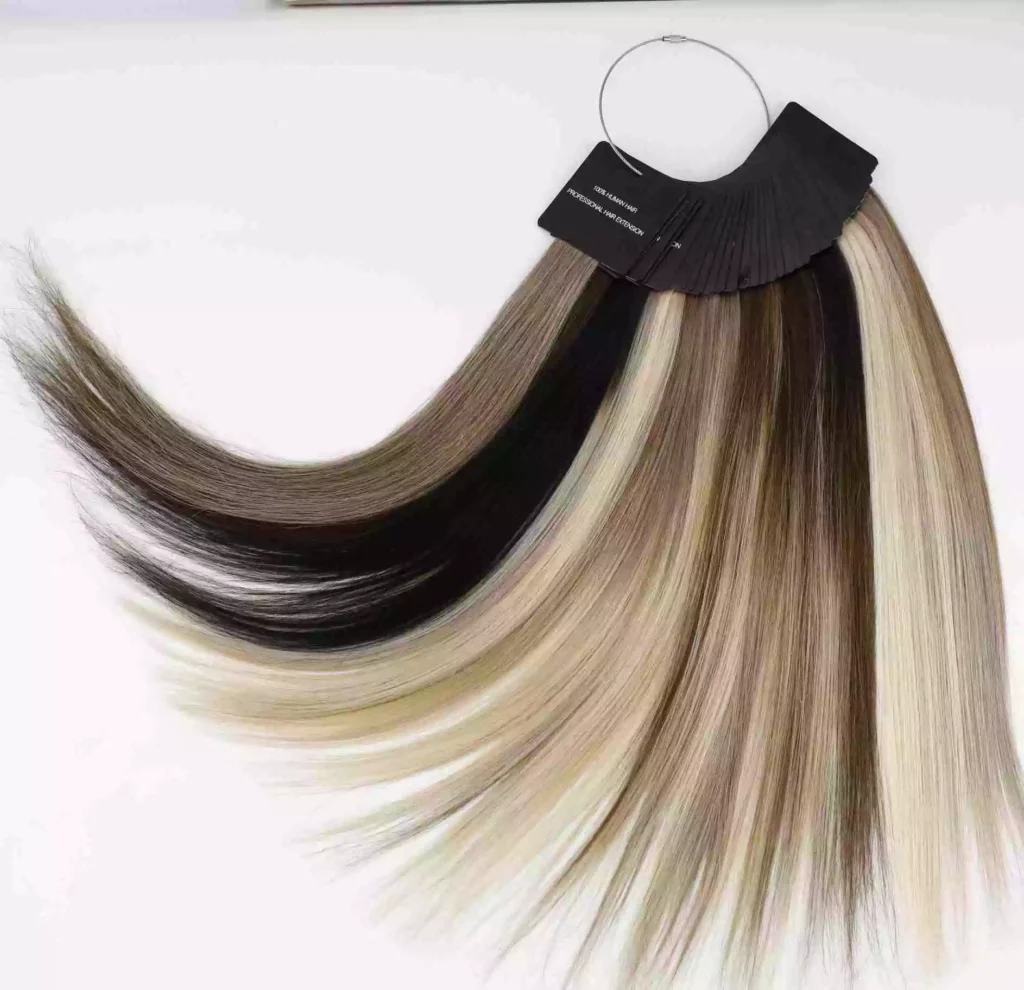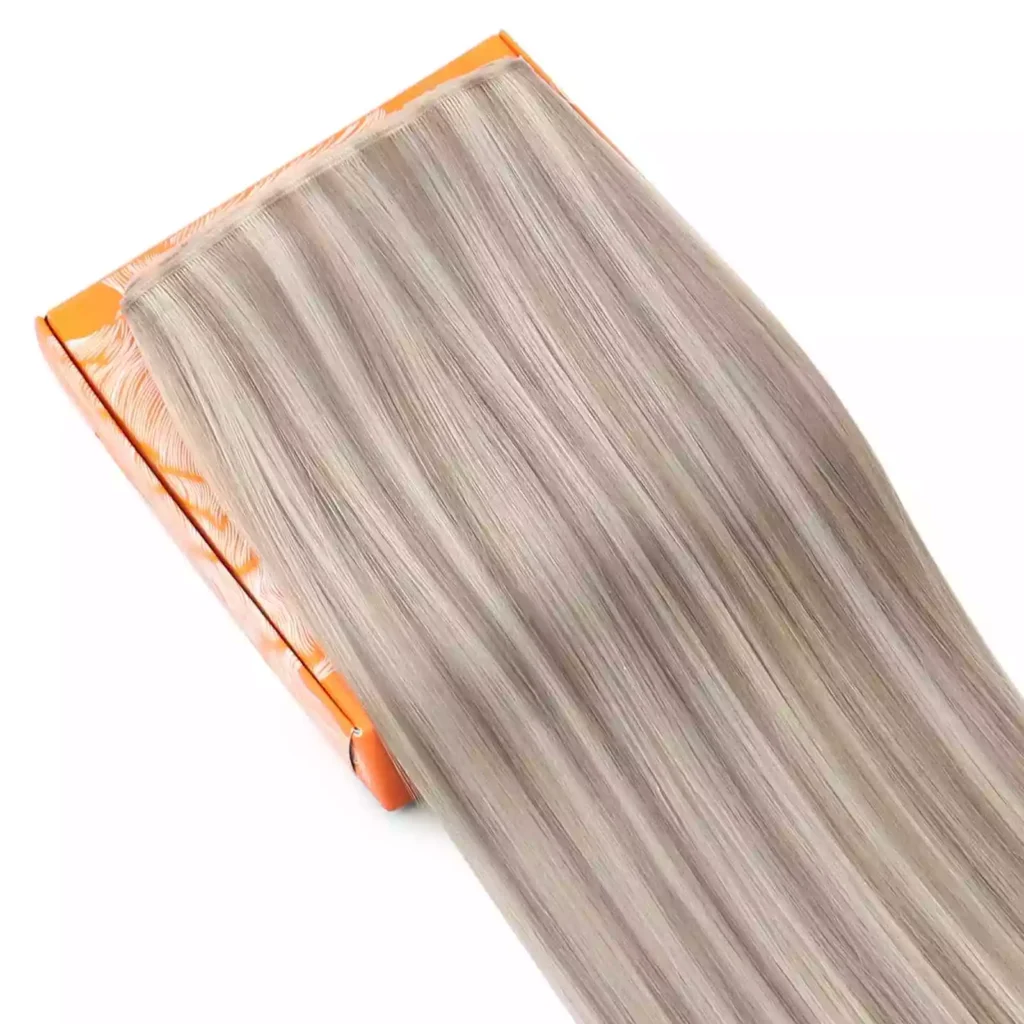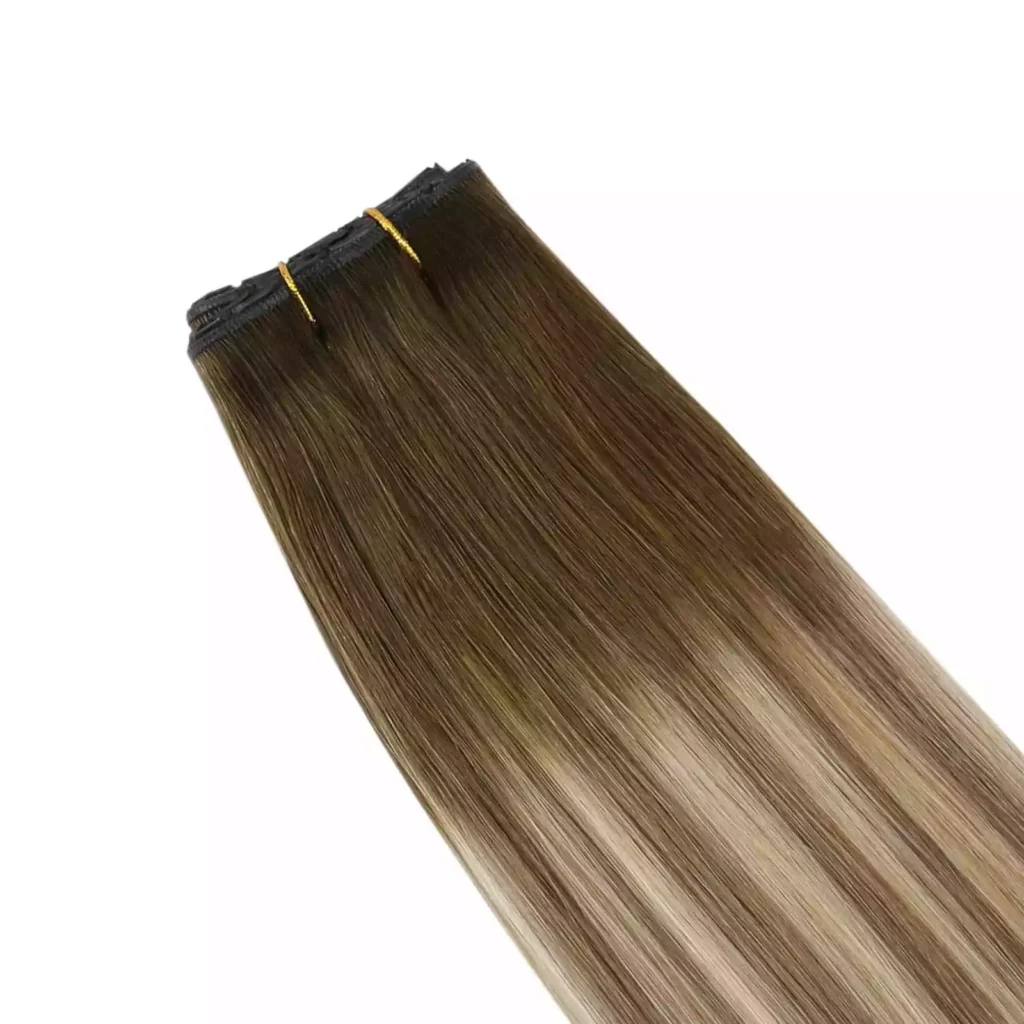Choosing the right hair extension shade can be tricky—especially when you see color codes like #3/8/22 or #18P613. At first glance, these numbers might look confusing, but they actually follow a simple system that helps match your extensions perfectly to your natural hair. Let’s break it down.
1. How the Hair Extension Color Numbers System Work
Full Shine uses a professional Hair Extension Color Numbers System to describe each shade.
Generally, the lower the number, the darker the color; the higher the number, the lighter the shade.
- #1 Jet Black → the darkest shade
- #60 Platinum Blonde → a very light blonde
- #1000 White Blonde → the lightest blonde available

This numbering structure helps stylists and customers easily identify tones and levels, from rich black to pale blonde.
2. Base Color Categories
Here’s a quick guide to the most common base colors:
| Color Code | Name | Tone Description |
|---|---|---|
| #1 | Jet Black | Deep, pure black |
| #1B | Off Black / Natural Black | Slightly softer than jet black |
| #2 | Dark Brown | Rich dark espresso tone |
| #3 | Olive Brown | Brown with a slight green tint |
| #4 | Medium Brown | Lighter brown tone |
| #6 | Chestnut Brown | Reddish medium brown |
| #8 | Ash Brown | Cool-toned light brown |
| #18 | Ash Blonde | Light blonde with cool undertones |
| #22 | Medium Blonde | Natural blonde |
| #27 | Honey Blonde | Golden, warm blonde |
| #60 | Platinum Blonde | Very light blonde |
| #1000 | Ice/White Blonde | Almost white, the lightest shade |
3. What “P” Colors Mean — Highlighted or Piano Shades
When you see a “P” in a color code, such as 18P613, it means the shade is a Piano Colo (also called a Highlight Mix).
This type of color features two shades placed side-by-side, creating a natural highlighted effect—just like salon foils.
#18P613
= Ash Blonde(18) mixed with Bleach Blonde(613)
→ The combination adds depth and brightness, looks beautifully multi-tonal under natural light and are popular for creating sun-kissed looks.

4. What “Balayage” or “Ombre” Colors Mean — Gradual Color Blends
Another common pattern in Full Shine’s chart is the Balayage or Ombre style, represented by codes like 3/8/22.
These color combinations usually consist of three shades arranged from root to tip:
The first number represents the root color, which is typically darker.
The second and third numbers indicate the shades used in the remaining length, creating a beautiful highlighted or blended effect throughout the extensions.
#3/8/22
= Olive Brown (3) roots fade into Ash Brown(8) mix Medium Blonde(22)
→ This style mimics the natural gradient of sun-lightened hair, making it perfect for anyone who wants a soft, natural blend without obvious color lines.

5. How to Choose the Right Shade for You
Here are a few expert tips for selecting the right Full Shine Hair Extension Color Numbers:
- Match your mid-lengths, not your roots.
Extensions look most natural when they blend with the bulk of your hair rather than the very top. - If in doubt, choose a multi-tone color (P or Balayage).
These shades offer more flexibility and blend beautifully even if your hair color isn’t an exact match. - Check lighting.
Blonde tones like #18, #22, or #60 can look warmer indoors and cooler in sunlight. - Ask for professional advice.
Full Shine color experts can help you compare tones or recommend the closest match based on your photos.
6. Final Thoughts
Full Shine’s Hair Extension Color Numbers may seem complex at first glance, but once you understand the numbering logic, it’s actually a powerful tool to help you find your perfect shade match.
Whether you’re going for the natural depth of #3/8/22 or the bright dimension of #18P613, knowing how to read the color codes gives you the confidence to choose extensions that blend seamlessly—and look effortlessly natural.
Contact Us
If you have any questions, please don’t hesitate to contact us.
-
Why Do Your Hair Extensions Break?
Dear customers, we understand how frustrating it can be to wear your new extensions with such great anticipation, only to […]
-
Why Hair Extensions Dyeing Fail?
Have you ever bought a high-quality human hair extension with great anticipation, only to find that the color simply wouldn’t […]
-
Very Thin Hair? Why Clip-Ins Feel Thin
We often hear that our Full Shine Clip-Ins is very thin hair and we want to assure you that this […]